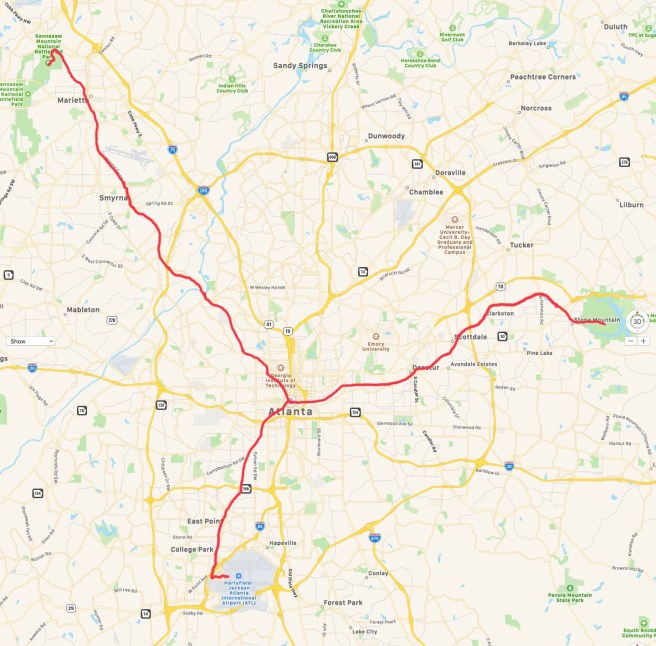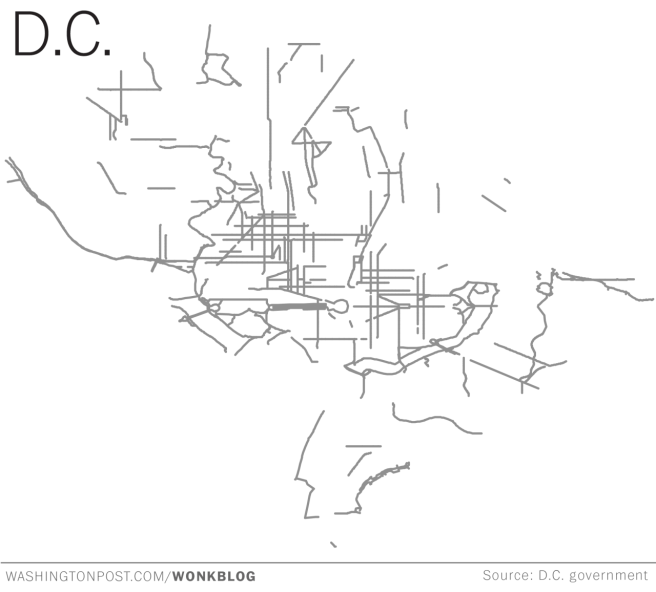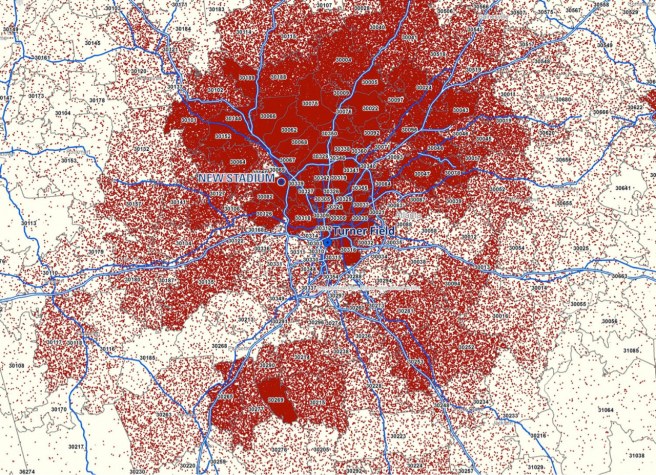
On Memorial Day weekend I finished an urban walking trilogy. One morning in 2017 I set out to walk 19 miles from the heart of downtown out east to the top of Stone Mountain. I had toyed with the idea for a while, and figured one morning, what the heck. Why not? As soon as I finished, I thought about where else I might go. In 2018, it was 23 miles out northwest to Kennesaw Mountain’s summit. This year, I did a little morning 13-miler down to the airport.
Most of the time on these walks, it’s not really enjoyable. The streets and highways aren’t friendly for pedestrians. The sun bears down on you. Hard sidewalks (when they exist) make my feet hurt. I walk past industrial parks, encampments for those with no other place to sleep, empty lots, next to 4-lane highways, underneath interstate overpasses, past strip malls, past front porches. I feel kinda scummy and outcast, especially when just starting out. But eventually there’s a sense of place I develop, connecting the pieces, filling in the gaps, that I don’t get in other ways. And there’s a satisfaction of looking back to where I came from, and knowing what’s in between.
Like most dumb Type 2 fun I do, I’m… not exactly sure… why? But when I get ideas, and wonder what-ifs, and they don’t go away, it’s usually best to try to give them life.







